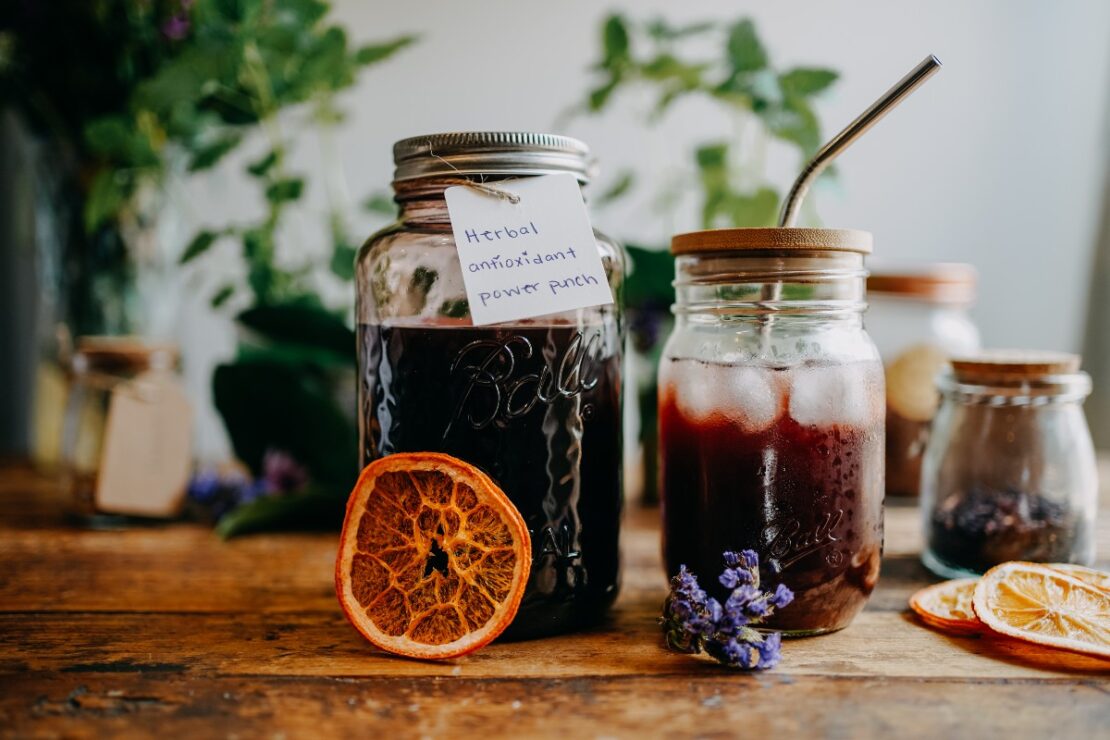
Antioxidant Herbal Power Punch With a Classic Fruity Flavor
Spring has sprung, and even though we’re not exactly feeling the truth of that up in the northeastern United States, I am hopeful that warmer weather is on the way–so hopeful that I have been preemptively planning and practicing my go-to beverages for summer as if I could will the passing of these cold days through the power of kitchen crafts. While I have not successfully summoned a 70-degree day yet, I have nailed down a fantastic punch recipe I’ve dubbed the “Antioxidant Power Punch.”
I wanted something that would be fruity, tangy, and ever so slightly sweet. Crushable and refreshing were both requirements for the finished product, which I also wanted to be as good for you as it is tasty. I quickly put together the herbal allies I wanted to bring together in this punch recipe, but figuring out the exact amounts took a little working out. It took a few weeks, and probably five batches to get it exactly where I wanted it.
I am so happy with how this turned out! The different fruity elements give it a very multidimensional classic punch flavor that also packs a powerful antioxidant punch. Antioxidants help to fight inflammation and oxidative damage in the body. The calming and soothing benefits of this herbal punch recipe can also aid in reducing the impacts of stress on the body. Let’s get into the benefits of each herbal ally in this recipe next.
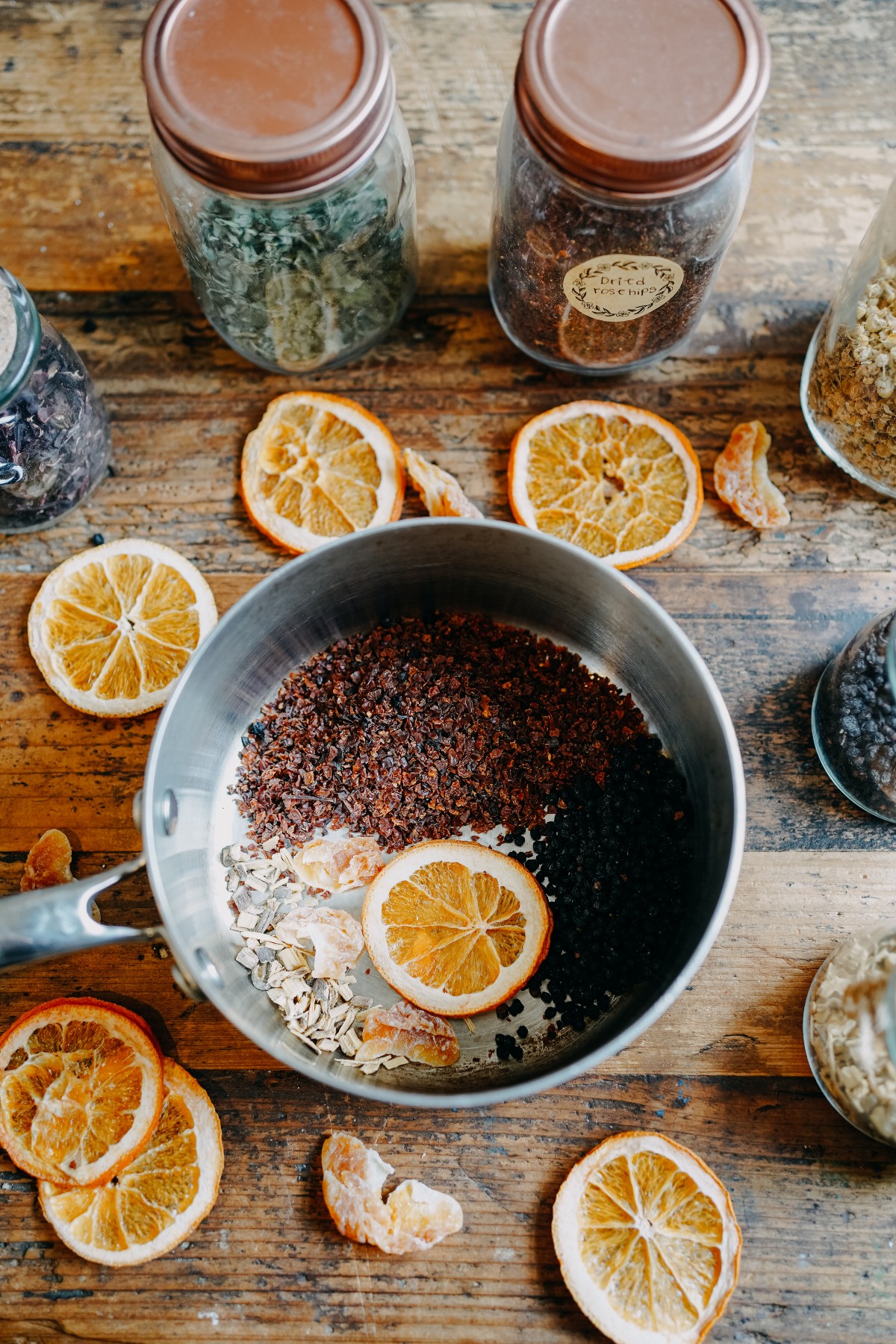
Herbal Allies
Oranges
Candied oranges (Citrus x sinensis) contribute their signature addictive sweet and tangy flavor to the punch. In addition, they offer a bevy of health benefits. High in vitamin C and a host of flavonoids that work together to provide antioxidant protection and anti-inflammatory benefits, oranges are a powerful fruit (Mateljan, 2007).
Hibiscus
The calyces of the hibiscus (Hibiscus sabdariffa) plant are delightfully tart, with a fruity tang that quenches thirst yet keeps you coming back for more. Flavonoids, anthocyanins, and phenolic acids all contribute to the antioxidant benefits of this herbal ally (Montalvo-González et al., 2022). Hibiscus also has a cooling effect which makes it the perfect summer beverage.
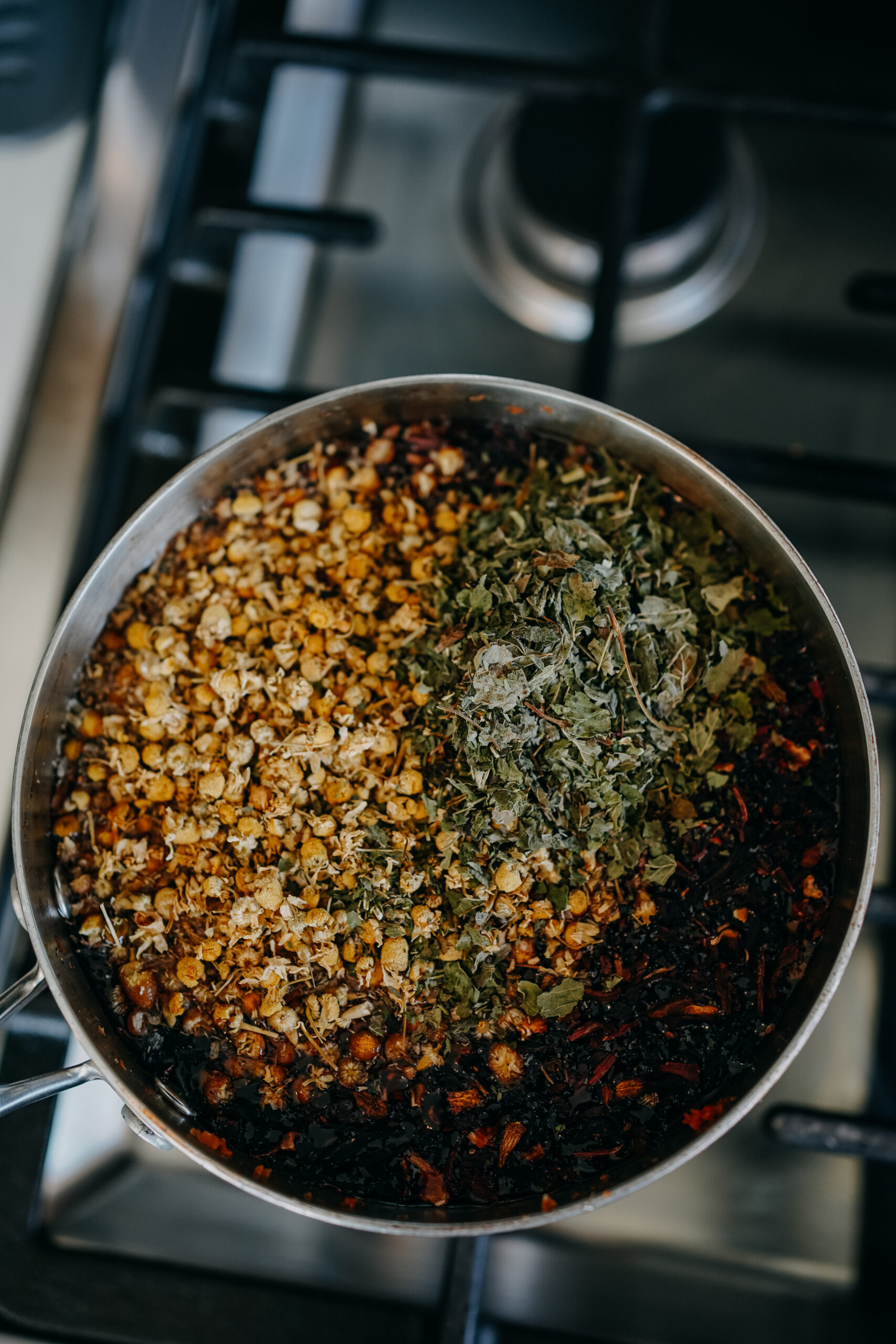
Chamomile
Fruity and floral, chamomile (Matricaria chamomilla) adds a delicious, apple-y note to the flavors of this fruity herbal punch. Furthermore, chamomile has anti-inflammatory properties which make it a perfectly relaxing addition. It has a calming effect on the mind and body which can help us to manage stress and its inflammatory effects (Hoffmann, 2003).
Lemon Balm
A member of the mint family, lemon balm (Melissa officinalis) is an ally to the nervous system through its soothing and uplifting impact on the spirit (Hoffmann, 2003). Supporting the nervous system can help us to better respond to stress, which can help us to minimize the harmful oxidative impacts stress has on the body.
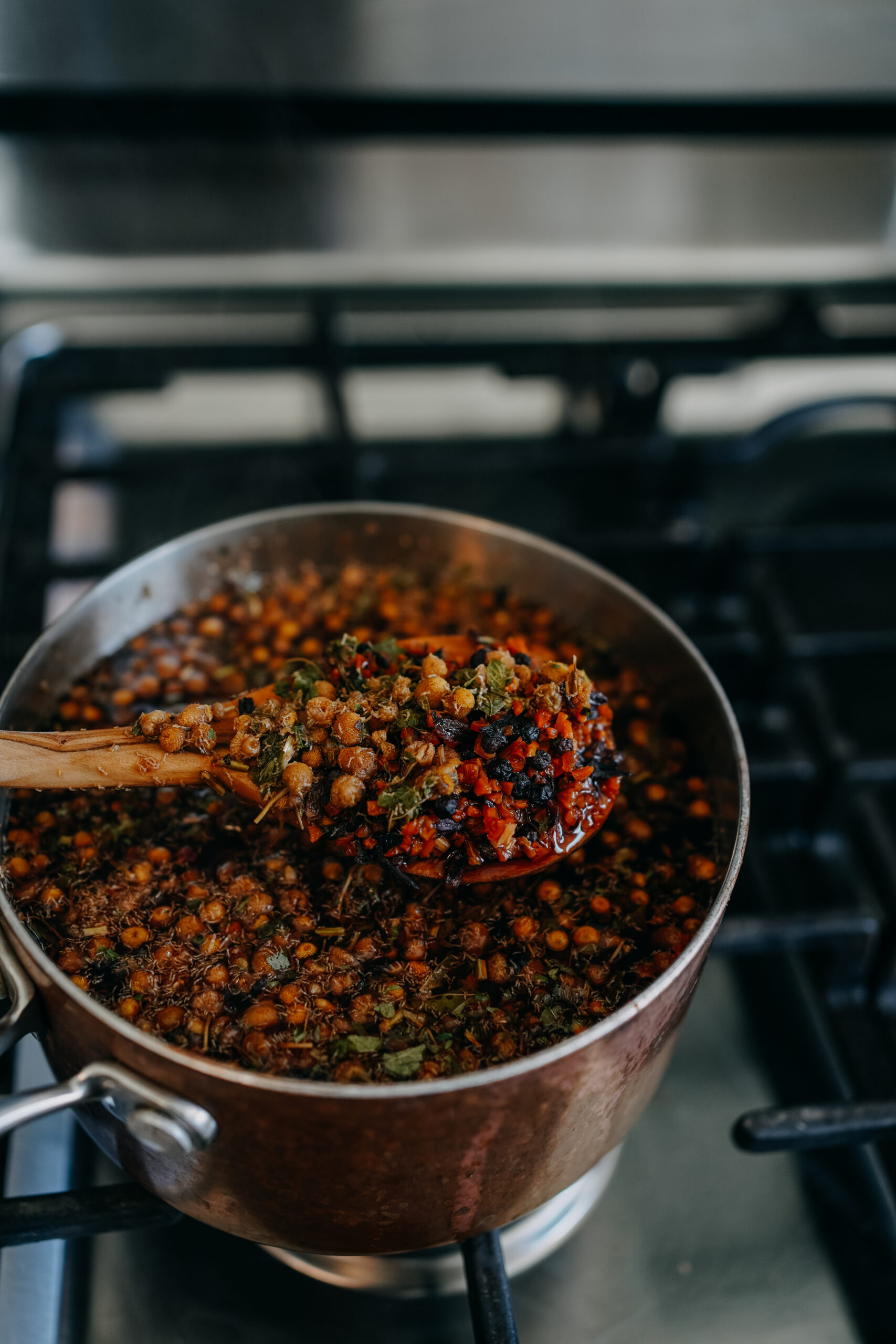
Rose Hips
Rose hips (Rosa spp.) contain vitamins C, A, B1, B2, B3, and K, and have long been regarded for its nutritional benefits. Nicholas Culpepper referenced the use of rose hips for “the scurvy” caused by Vitamin C deficency in “Culpepper’s Complete Herbal” published way back in 1880. Flavonoids punch up this herb’s antioxidant and anti-inflammatory power (Chevallier, 2000). The lightly floral and tart flavor of the rosehips gives dimension and zing to the flavor of the punch.
Elderberries
The fruit of elder (Sambucus nigra or S. canadensis) is now widely and commonly used in times of illness, often as a syrup. Containing vitamins C and A, flavonoids, and anthocyanins, these little berries pack a powerful antioxidant punch (Chevallier, 2000). It’s easy to understand why we lean on this ally in times of lowered vitality, but it need not be relegated strictly to a wellness syrup. This dark fruit adds a wonderful depth of flavor to the punch.
Licorice Root
Licorice root (Glycyrrhiza glabra) contains isoflavones which have an anti-inflammatory effect, and its long-chain sugars (polysaccharides) help to protect the digestive tissues through their soothing demulcent effect (Chevallier, 2000). In this punch recipe, licorice adds a light sweetness to balance the tart flavors.
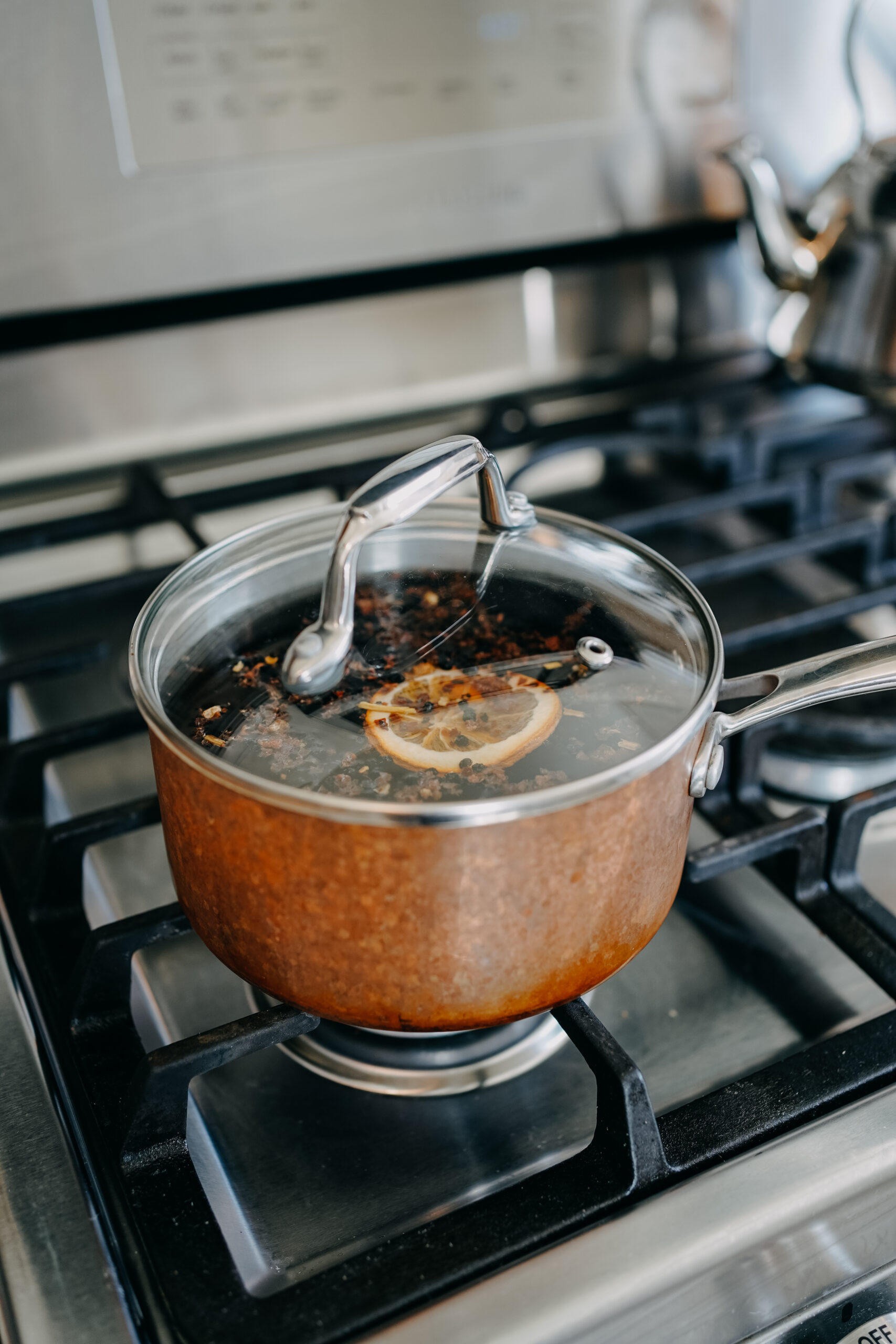
Antioxidant Power Herbal Punch
Note: All herbs in this recipe are dried
5 cups water
¼ cup rose (Rosa spp.) hips
2 tablespoons elder (Sambucus nigra or S. canadensis) berry
1 teaspoon licorice (Glycyrrhiza glabra) root
5 candied orange (Citrus x sinensis) slices
¼ cup chamomile (Matricaria chamomilla) flowers
⅓ cup hibiscus (Hibiscus sabdariffa) calyx
¼ cup lemon balm (Melissa officinalis)
- Measure the rose hips, elderberries, and licorice root into a pot.
- Add water and candied orange slices to the pot.
- Turn the heat to medium, cover, and allow the herbs and water to gradually come to a boil.
- Once a boil is reached, reduce to a simmer. Simmer for 30 minutes.
- After 30 minutes, turn the heat off and remove the lid. Add the chamomile, hibiscus, and lemon balm.
- Give the contents a good stir, cover, and allow to steep for another 30 minutes.
- To strain, line a fine mesh strainer with cheesecloth, and carefully pour the punch into the strainer, reserving the liquid. Use a spatula and apply pressure to the herbs to squeeze every last drop of goodness from them. Compost the herbs.
- You can store this punch in the fridge for up to two days, but it never lasts that long in my fridge.

In Closing,
Sipping this punch while envisioning myself in a sundress at a patio party is carrying me through this last stretch of chilly weather to warmer days. There are few things that thrill me more than when something is nourishing to the body and a delight to the senses, that perfect combination of satisfying and craveable. This herbal power punch checks all the boxes. With a full range of fruit flavors and just enough sweet to balance out the tang, you’ll be reaching for this recipe again and again.
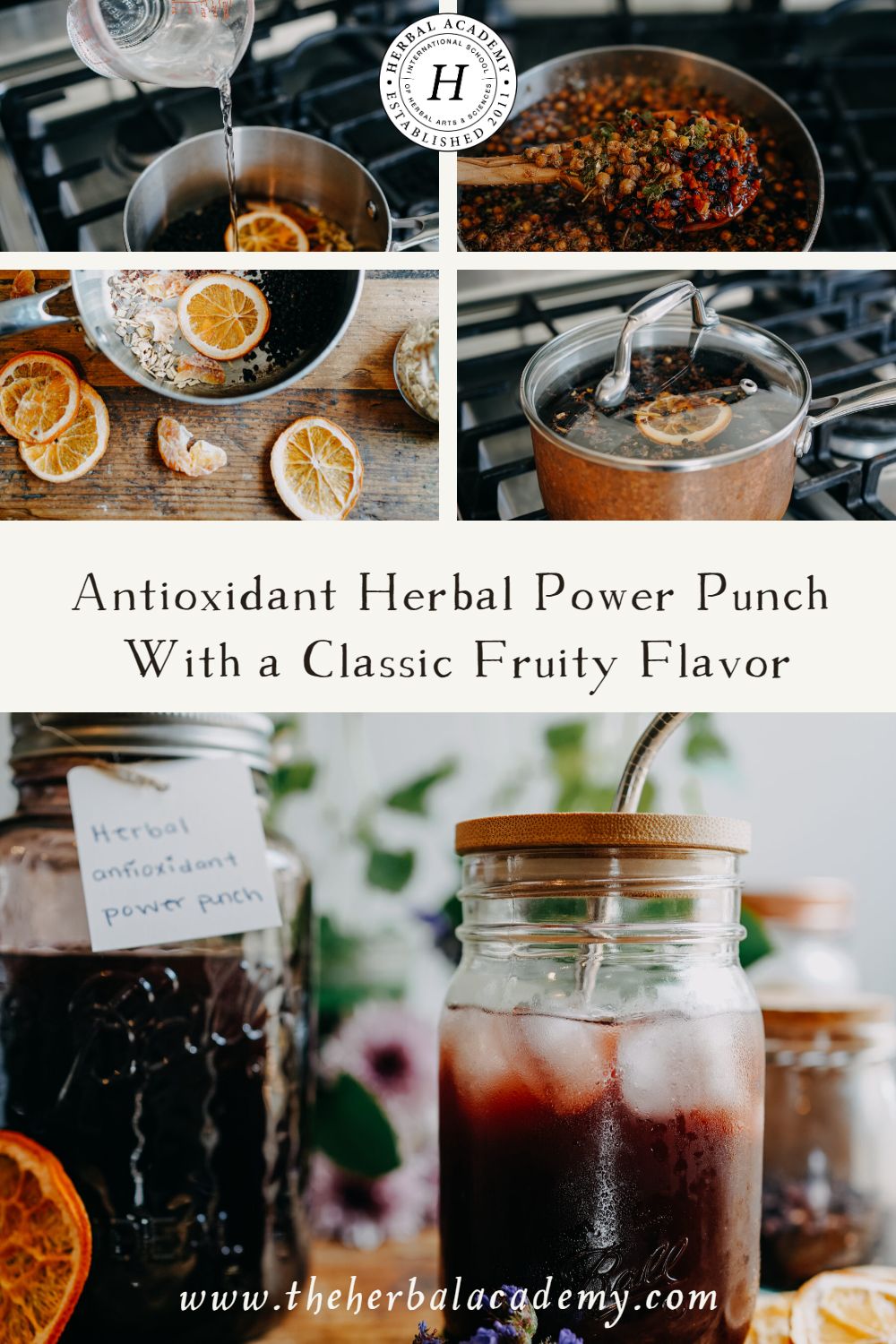
REFERENCES
Chevallier, A. (2000). Encyclopedia of herbal medicine: The definitive reference to 550 herbs and remedies for common ailments. Dorling Kindersley.
Culpepper, N. (1880). Culpeper’s complete herbal: Consisting of a comprehensive description of nearly all herbs with their medicinal properties and directions for compounding the medicines extracted from them. Foulsham.
Hoffman, D. (2003). Medical herbalism: The science and practice of herbal medicine. Healing Arts Press.
Mateljan, G. (2007). The world’s healthiest foods: Essential guide for the healthiest way of eating. George Mateljan Foundation.
Montalvo-González, E., Villagrán, Z., González-Torres, S., Iñiguez-Muñoz, L.E., Isiordia-Espinoza, M.A., Ruvalcaba-Gómez, J.M.,… & Anaya-Esparza, L.M. (2022). Physiological effects and human health benefits of Hibiscus sabdariffa: A review of clinical trials. Pharmaceuticals, 15(4), 464. https://doi.org/10.3390/ph15040464








